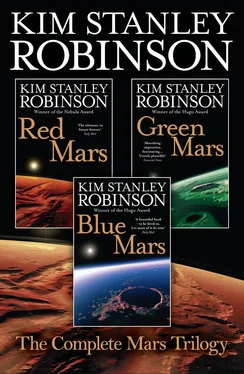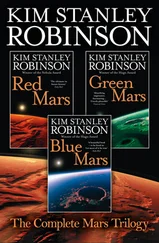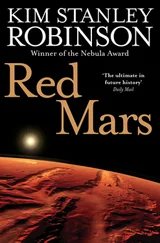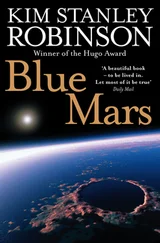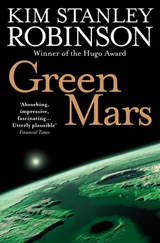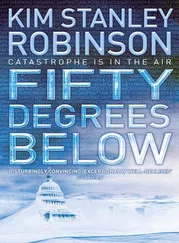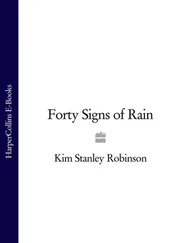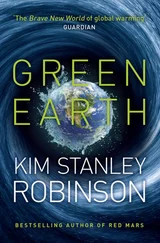So the Tharsis Bulge was the most important factor in shaping the surface of Mars. The other major factor was meteor fall. In the Noachian Age, three to four billion years ago, millions of meteors were falling on Mars at a tremendous rate, and thousands of them were planetesimals, rocks as big as Vega or Phobos. One of the impacts left behind Hellas Basin, 2000 kilometers in diameter, the largest obvious crater in the solar system; although Daedalia Planum appears to be the remains of an impact basin 4500 kilometers across. Those are big; but then there are areologists who believe that the entire northern hemisphere of Mars is an ancient impact basin.
These big impacts created explosions so cataclysmic that it is hard to imagine them; ejecta from them ended up on the Earth and the Moon, and as asteroids in Trojan orbits; some areologists think that the Tharsis Bulge started because of the Hellas impact; others believe that Phobos and Deimos are ejecta. And these were only the largest impacts. Smaller stones fell every day, so that the oldest surfaces on Mars are saturated with cratering, the landscape a palimpsest of newer rings obscuring older ones, with no patch of land untouched. And each of these impacts released explosions of heat that melted rock: elements were broken out of their matrix and fired away in the form of hot gases, liquids, new minerals. This and the outgassing from the core produced an atmosphere, and lots of water; there were clouds, storms, rain and snow, glaciers, streams, rivers, lakes, all scouring the land, all leaving unmistakable marks of their passage – flood channels, stream beds, shorelines, every kind of hydrologic hieroglyphic.
But all that went away. The planet was too small, too far from the sun. The atmosphere froze and fell to the ground. Carbon dioxide sublimed to form a thin new atmosphere, while oxygen bonded to rock and turned it red. The water froze, and over the ages seeped down through the kilometers of meteor-broken rock. Eventually this layer of regolith became permeated with ice, and the deepest parts were hot enough to melt the ice; so there were underground seas on Mars. And water always flows downhill; so these aquifers migrated down, slowly seeping, until they pooled behind some stoppage or another, a rib of high bedrock or a frozen soil barrier. Sometimes intense artesian pressures built against these dams; and sometimes a meteor would hit, or a volcano appear, and the dam would burst apart and a whole underground sea would spew over the landscape in enormous floods, floods ten thousand times the flow of the Mississippi. Eventually, however, the water on the surface would freeze and sublime away in the ceaseless dry winds, and fall on the poles in every winter’s fog hood. The polar caps therefore thickened, and their weight drove the ice underground until the visible ice was only the tip of two world-topping lenses of underground permafrost, lenses ten and then a hundred times the visible caps’ volume. While back down toward the equator, new aquifers were being filled from below, by outgassing from the core; and some of the old aquifers were refilling.
And so this slowest of cycles approached its second round. But as the planet was cooling, all of it happened more and more slowly, in a long ritard like a clock winding down. The planet settled into the shape we see. But change never stops; the ceaseless winds carved the land, with dust that grew finer and finer; and the eccentricities of Mars’s orbit meant that the southern and northern hemispheres traded the cold and warm winters in a 51 , 000 year cycle, so that the dry ice cap and the water ice cap reversed poles. Each swing of this pendulum laid down a new stratum of sand, and the troughs of new dunes cut through older layers at an angle, until the sand around the poles lay in a stippled cross-hatching, in geometrical patterns like Navajo sand paintings, banding the whole top of the world.
The colored sands in their patterns, the fluted and scalloped canyon walls, the volcanoes rising right through the sky, the rubbled rock of the chaotic terrain, the infinity of craters, ringed emblems of the planet’s beginning … Beautiful, or harsher than that: spare, austere, stripped down, silent, stoic, rocky, changeless. Sublime. The visible language of nature’s mineral existence.
Mineral; not animal, nor vegetable, nor viral. It could have happened but it didn’t. There was never any spontaneous generation out of the clays or the sulphuric hot springs; no spore falling out of space, no touch of a god; whatever starts life (for we do not know), it did not happen on Mars. Mars rolled, proof of the otherness of the world, of its stony vitality.
And then, one day …
She hitthe ground with both feet solid, nothing tricky about it, the g familiar from nine months in the Ares; and with the suit’s weight, not that much different from walking on Earth, as far as she could remember. The sky was a pink shaded with sandy tans, a color richer and more subtle than any in the photos. “Look at the sky,” Ann was saying, “look at the sky.” Maya was chattering away, Sax and Vlad spun like rotating statues. Nadezhda Francine Cherneshevsky took a few more steps, felt her boots crunch the surface. It was salt-hardened sand a couple of centimeters thick, which cracked when you walked on it; the geologists called it duricrust or caliche. Her boot tracks were surrounded by small systems of radial fractures.
She was out away from the lander. The ground was a dark rusty orange, covered with an even litter of rocks the same color, although some of the rocks showed tints of red or black or yellow. To the east stood a number of rocket landing vehicles, each one a different shape and size, with the tops of more sticking over the eastern horizon. All of them were crusted the same red-orange as the ground: it was an odd, thrilling sight, as if they had stumbled upon a long-abandoned alien spaceport. Parts of Baikonur would look like this, in a million years.
She walked to one of the nearest landing vehicles, a freight container the size of a small house, set on a skeletal four-legged rocket assembly. It looked like it had been there for decades. The sun was overhead, too bright to look at even through her faceplate; it was hard to judge through the polarization and other filters, but it seemed to her that the daylight was much like that on Earth, as far as she could remember. A bright winter’s day.
She looked around again, trying to take it in. They stood on a gently bumpy plain, covered with small sharp-edged rocks, all half-buried in dust. Back to the west the horizon was marked by a small flat-topped hill. It might be a crater rim, it was hard to say. Ann was already halfway there, still quite a large figure; the horizon was closer than seemed right, and Nadia paused to take note of that, suspecting that she would soon become accustomed to it, and never notice. But it was not Earthlike, that strangely close horizon, she saw that clearly now. They stood on a smaller planet.
She made a concerted effort to recall Earth’s gravity, wondering that it should be so hard. Walking in the woods, over tundra, on the river ice in winter … and now: step, step. The ground was flat, but one had to thread a course between the ubiquitous rocks; there was no place on Earth that she knew of where they were distributed so copiously and evenly. Take a jump! She did, and laughed; even with her suit on she could tell she was lighter. She was just as strong as ever, but weighed only thirty kilos! And the forty kilos of the suit … well, it threw her off balance, that was true. It made her feel that she had gone hollow. That was it: her center of gravity was gone, her weight had been shifted out to her skin, to the outside of her muscles rather than the inside. That was the effect of the suit, of course. Inside the habitats it would be as it had been in the Ares. But out here in a suit, she was the hollow woman. With the aid of that image she could suddenly move more easily, hop over a boulder, come down and take a turn, dance! Simply pop in the air, dance, land on top of a flat rock – watch out—
Читать дальше
